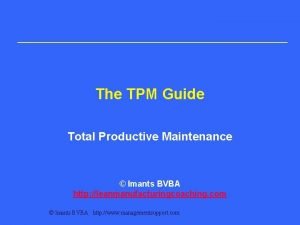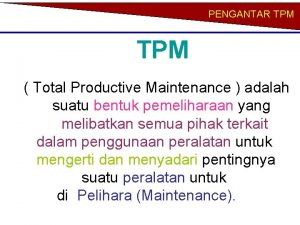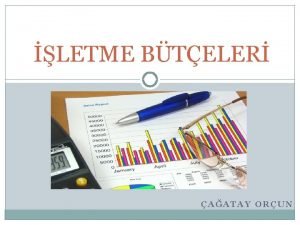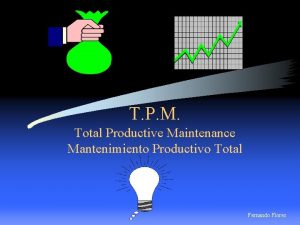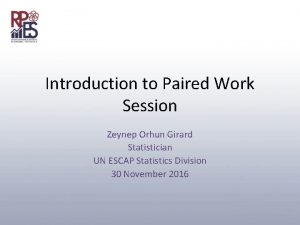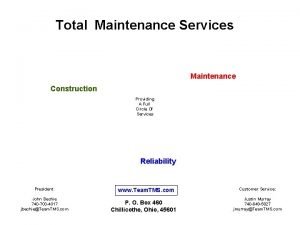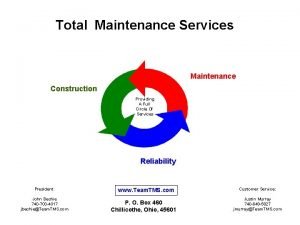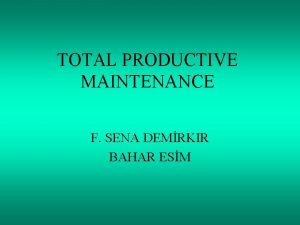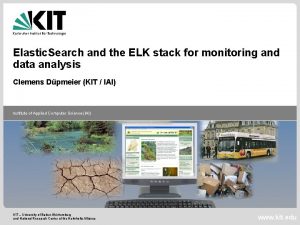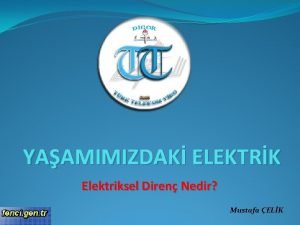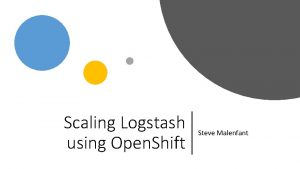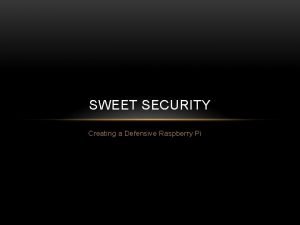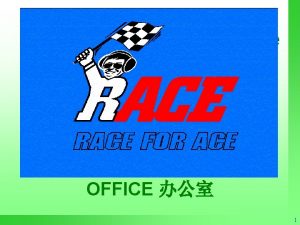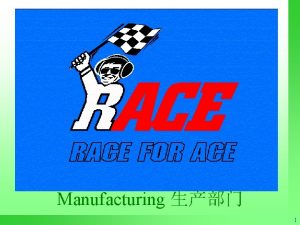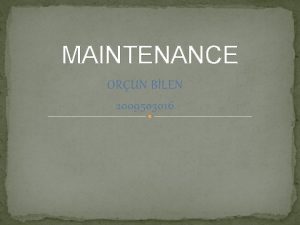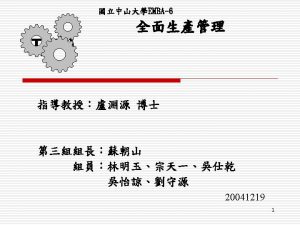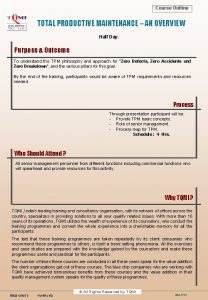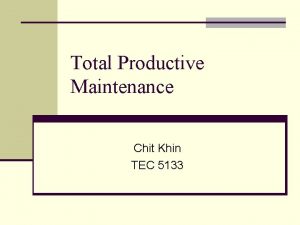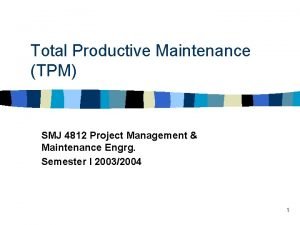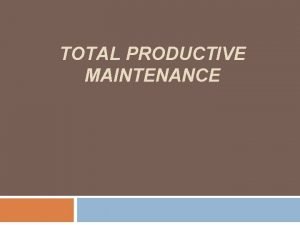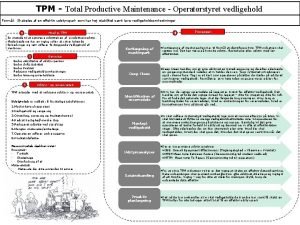TOTAL PRODUCTIVE MAINTENANCE Samed ORHUN akan ELK Orun


















- Slides: 18

TOTAL PRODUCTIVE MAINTENANCE Samed ORHUN Çağkan ÇELİK Orçun KIRTIL

Contents 1. What is total productive maintenance (TPM)? 2. Why TPM? 3. History of TPM 4. 8 pillars of TPM 5. Conclusion

What is Total Productive Maintenance? Total Productive Maintenance (TPM) is a maintenance program which involves a newly defined concept for maintaining plants and equipment. The goal of the TPM program is to markedly increase production while, at the same time, increasing employee morale and job satisfaction.

TPM brings maintenance into focus as a necessary and vitally important part of the business. It is no longer regarded as a nonprofit activity. The goal is to hold emergency and unscheduled maintenance to a minimum.

Why TPM? TPM was introduced to achieve the following objectives Avoid wastage in a quickly changing economic environment. Producing goods without reducing product quality. Reduce cost. Produce a low batch quantity at the earliest possible time. Goods send to the customers must be non defective.

History of TPM is a innovative Japanese concept. The origin of TPM can be traced back to 1951 when preventive maintenance was introduced in Japan. However the concept of preventive maintenance was taken from USA. Nippondenso was the first company to introduce plant wide preventive maintenance in 1960.

In preventive maintenance operators produced goods using machines and the maintenance group was dedicated to the work of maintaining those machines. However with the high level of automation of Nippondenso, maintenance became a problem as so many more maintenance personnel were now required. So the management decided that much of the routine maintenance of equipment would now be carried out by the operators themselves.

Thus Nippondenso which already followed preventive maintenance also added Autonomous maintenance done by production operators. The maintenance crew went in the equipment modification for improving reliability. The modifications were made or incorporated in new equipment.

This lead to maintenance prevention. Thus preventive maintenance along with Maintenance prevention and Maintainability Improvement gave birth to Productive maintenance. The aim of productive maintenance was to maximize plant and equipment effectiveness to achieve optimum life cycle cost of production equipment.

8 Pillars of TPM

TPM has 8 pillars of activity. These 8 pillars are the following: 1) focussed improvement (Kobetsu Kaizen) - Continuously even small steps of improvement. 2) Planned Maintenance - It focusses on Increasing Availability of Equipments & reducing Breakdown of Machines.

3) Initial Control - To establish the system to launch the production of new product & new equipment in a minimum run up time. 4) Education & Training - Formation of Autonomous workers who have skill & technique for autonomous maintenance.

5) Autonomous Maintenance (Jishu Hozen) - It means "Maintaining one's equipment by oneself". 6) Quality Maintenance (Hinshitsu Hozen) - Quality Maintenance is establishment of machine conditions that will not allow the occurrence of defects & control of such conditions is requored to sustain Zero Defect.

7) Office TPM - To make an efficient working office that eliminate losses. 8) Safety, Hygiene & Environment - The main role of SHE (Safety, Hygiene & Environment) is to create Safe & healthy work place where accidents do not occur, uncover & improve hazardous areas & do activities that preserve environment.

The Base for the TPM Activity is 5 S; Seiri (Sorting out the required or not required items); Seition (Systematic Arrangement of the required items); Seiso (Cleaniness); Seiketsu (Standardisation); Shitsuke (Self Discipline).

Conclusion Today, with competition in industry at an all time high, TPM may be the only thing that stands between success and total failure for some companies. It has been proven to be a program that works.

It can be adapted to work not only in industrial plants, but in construction, building maintenance, transportation, and in a variety of other situations. If everyone involved in a TPM program does his or her part, an unusually high rate of return compared to resources invested may be expected.

THANK YOU FOR LISTENING. .
 Tpm implementation master plan
Tpm implementation master plan Total productive maintenance ppt
Total productive maintenance ppt Orun nedir
Orun nedir Son los programas de calidad jit, tqc, tpm, mrp
Son los programas de calidad jit, tqc, tpm, mrp Orhun kitabeleri
Orhun kitabeleri Türk adının geçtiği ilk yazılı belgeler
Türk adının geçtiği ilk yazılı belgeler Dr bruno girard
Dr bruno girard 6.sınıf sosyal bilgiler asya hun devleti slayt
6.sınıf sosyal bilgiler asya hun devleti slayt Musammat gazel örneği
Musammat gazel örneği Total maintenance management
Total maintenance management Kerry ingredients vicksburg ms
Kerry ingredients vicksburg ms Tpm tqm
Tpm tqm Elk stack for monitoring
Elk stack for monitoring Egusd schools
Egusd schools Letken
Letken Elk vs wilkins apush
Elk vs wilkins apush Logstash openshift
Logstash openshift Node_latest_armhf.deb
Node_latest_armhf.deb Elk river lutheran church
Elk river lutheran church
